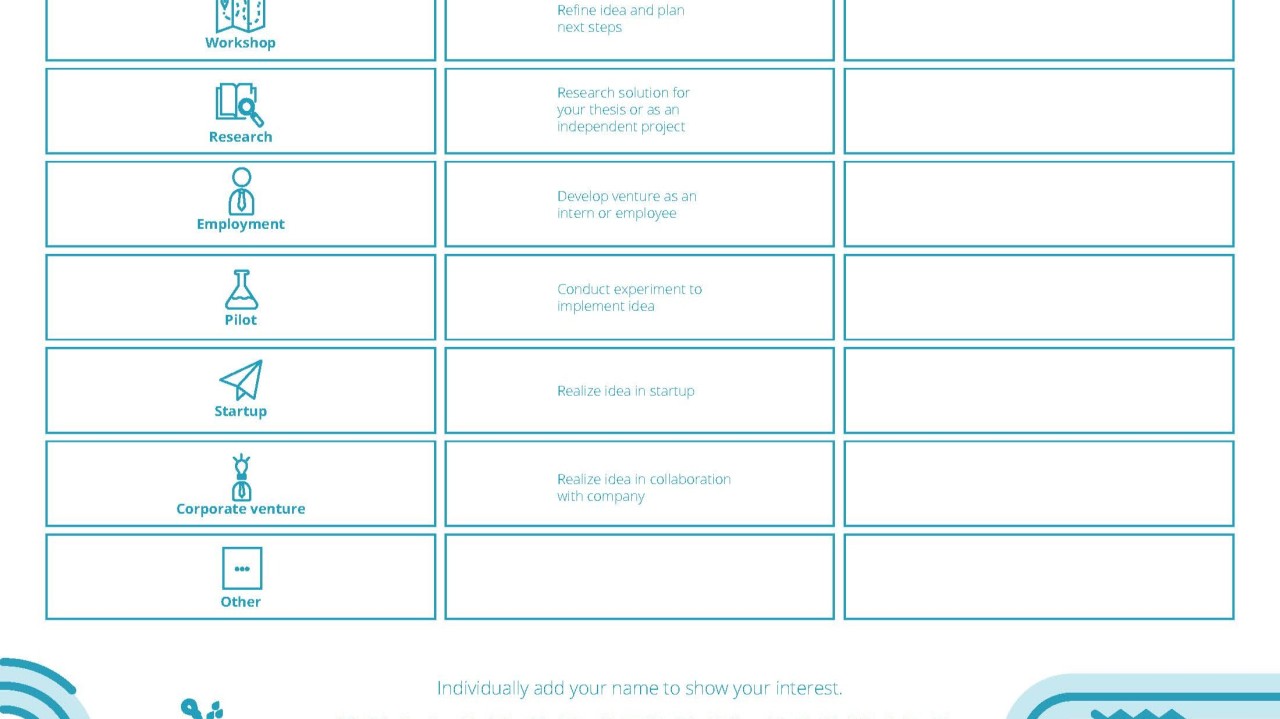
Ensure a Path for Continuation
How to Keep Momentum After a Hackathon Ends?
This is the tenth article of a series presenting our learnings from 10 years of InnoDays.
Lesson #10: Ensure a Path for Continuation
Hackathons are excellent at sparking innovative ideas—but what happens after the event ends?
After running InnoDays for a decade, one of the most important lessons we’ve learned is this: generating ideas is not the hardest part. The real challenge lies in capturing those ideas and setting up a structure that allows them to grow and evolve.
Too often, companies host hackathons, select a winning idea, and move on. But if the goal is lasting innovation, that approach isn’t enough.
So what can organizations do to ensure the momentum continues after the event? Here are some of the key ways to make sure hackathons have a lasting impact:
1. Document the Process, Not Just the Pitch
Innovation rarely appears fully formed. The conversations, iterations, and pivots along the way often contain just as much value as the final presentation.
At InnoDays, we require teams to submit full process documentation in order to be considered for the final selection. This ensures that decisions are based not only on the outcome but also on how the idea developed during the hackathon.
We also use a tool called the Collaboration Canvas, which participants fill out individually and present at the final expo. This canvas is designed to make visible each person’s motivation to continue working on the project—as well as their preferred form of involvement going forward. Since levels of motivation and availability can vary within teams, this helps organizers and partners better understand who is likely to stay engaged and how.
2. Make Outcomes Transferable
Ideas can’t thrive in a vacuum. For hackathon results to have an impact, they need to be transferred to the right teams or forums within the company. If outcomes remain stuck in a presentation file or buried in a shared folder, they’ll quickly be forgotten. Clear handover mechanisms and dedicated follow-up structures are essential to bridge the gap between ideation and implementation.
3. Create Pathways for Continuation
Hackathons can serve as springboards for further collaboration, talent development, or even new ventures. That’s why we encourage companies to offer:
- Internships or employment opportunities aligned with the hackathon topics
- Support for academic dissertations or research partnerships
- Coaching and early-stage funding for teams that want to further validate their ideas through interviews, experiments, or prototyping
These pathways make it easier for ideas—and the people behind them—to move forward.

4. Support Internal Teams with Resources
When employees participate in hackathons, companies need to go beyond recognition. If internal teams are serious about pursuing an idea, they need slack resources—time, budget, and freedom to continue developing it. Without this support, even the most promising ideas risk fading once the day-to-day routine returns.
In short: If you’re serious about innovation, don’t treat the hackathon as the finish line. The real work begins after the event ends. By documenting ideas thoroughly, assessing individual motivations, setting up pathways for continuation, and investing in follow-up structures, you ensure that the energy and creativity generated during a hackathon can lead to real, lasting change.


No Comments
Sorry, the comment form is closed at this time.